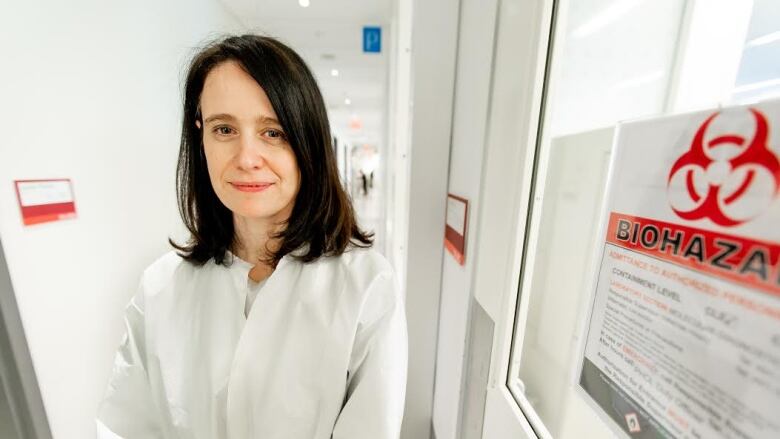The country doesn't have enough testing capacity, and might never get it.
When did Canada's coronavirus testing go off the rails?
The first clues were evident back on Jan. 24, the day after Wuhan, China, was locked down.
"We're ready, we're prepared."
Those were the confident words from Dr. David Williams, Ontario's chief medical officer of health in a news briefing that day. The province already had a "specific and reliable" coronavirus test that could deliver results in 24 hours.
The public message was clear. We've got this. After all, Ontario had survived SARS.
"Folks, it will still be business as normal," said Peter Donnelly, head of Public Health Ontario, at the same briefing.

Through the unforgiving lens of hindsight, they could not have been more wrong.
It's now brutally clear that SARS was just a warm-up — that roughly as many Canadians would die in just the first few weeks of this pandemic than in the entire SARS outbreak.
And a critical weapon in the battle, laboratory testing, became log-jammed in the opening days.
One week after the province closed schools, shops and prohibited large gatherings, many labs were overwhelmed.
By the first weekend, Ontario had a backlog of more than 7,200 tests. B.C. also reported a backlog, as did Alberta, Quebec and Manitoba.
Almost immediately, provinces began restricting who could be tested — limiting it to front-line health-care workers, people with severe symptoms and those who work with vulnerable groups.
Over the past week, the backlogs have cleared, but restrictions on testing still remain in most parts of Canada.

And the hard truth is that testing will continue to be limited, even in Ontario which has just announced it will soon be able to test 19,000 people a day.
"Even when we're at 19,000 tests a day we're not going to be able to test everybody and that would be the same in every other jurisdiction," said Vanessa Allen, chief of medical microbiology at Public Health Ontario, the government agency responsible for provincial labs.
Ontario solves problem, creates another
Just as the backlog was cleared, a new and equally frustrating problem emerged. Media reports on Tuesday revealed that Ontario's testing rate was dropping to just over 2,500 per day, but the province said it could run about 13,000.
Why isn't Ontario testing more?
The province created a new network of clinical labs in the middle of the pandemic — like building a bigger boat, mid-ocean, in a hurricane.
The Ministry of Health had the accounting firm KPMG organize all the labs in the province that are capable of microbial testing. That includes 10 hospital networks, six public health labs and three private lab networks.
Added up, they can do 13,000 tests per day, and expect to reach 19,000 in three weeks.
But that extra capacity was created suddenly, which means there weren't enough patient samples waiting to be tested, because there are still testing restrictions in place.
An expert committee is working on new recommendations on who should be tested and Premier Doug Ford is calling for expanded testing in long-term care homes and other vulnerable people.
Meanwhile, frightened patients like Nick Marceau of Toronto can't get tested, even though his doctor suspects he has COVID-19.

"It's frustrating to … somebody who lives alone when when you're confronted with this," Marceau, 38, said.
Marceau doesn't qualify for a test because he hasn't travelled, isn't in a high-risk group and his symptoms aren't severe enough to send him to hospital.
"It was judged that it was a watch-and-wait situation," he said.
'Completely unparalleled'
Why is testing such a big problem?
The simple answer — the COVID-19 tsunami caught almost everybody off guard.
"Everybody in the world is ramping up for the same tests and they're all vying for the same reagents," said Allen, referring to the chemicals necessary for tests. "This is not an Ontario issue, this is an international issue."
"The demand for this test is completely unparalleled."

Two months ago, Dr. Kevin Katz had an uneasy feeling about what might be headed his way.
He is an infectious disease specialist who manages the testing laboratories for several Toronto hospitals including North York General, Sunnybrook and Michael Garron.
"As soon as I thought this was going in the direction of a pandemic I had concerns about the supply chain," he said. The foreboding was based on more than a decade of pandemic planning.
In the first week of February, he began quietly stocking up on reagents. Weeks later, he ordered more, plus materials needed to extract the virus's genetic material and additional testing equipment.
"We were pretty aggressive. We were ordering and asking to take delivery the next day. We wanted it all physically delivered so we have pallets sort of strewn around the lab," he said.
One consequence of the low level of testing across Canada is that no one has a clear idea how big the epidemic is in this country.
"Right now we are almost certainly just seeing the most serious cases" said Ashleigh Tuite, an epidemiologist with the University of Toronto.
The low rate is frustrating Tuite and other epidemiologists who are trying to create models of the disease, which politicians are using to support their decisions.
Ideally, with enough capacity, Tuite believes there would be no restrictions on testing. Right now, the reliability of the models is affected by the under-reporting of cases.
"Until we have a consistent amount of testing in the population I think it's hard for me to say that I have confidence in those projections," said Tuite.
























